The paper created EXCLUSIVELY for farm families and rural residents of east central Alberta



The paper created EXCLUSIVELY for farm families and rural residents of east central Alberta













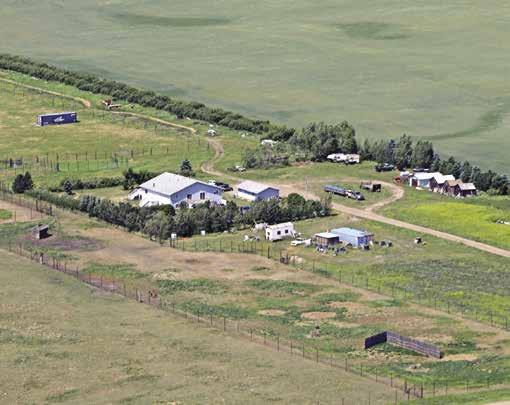








Posted speed limits in Alberta represent the maximum speed for that road in ideal driving conditions and are established to ensure safety of all those travelling on those roadways.
Bashaw RCMP provide the following information on the speed limits applicable in Alberta:
100 km/h on a provincial highway located outside an urban area (unless otherwise posted.)
• 80 km/h on a provincial highway located inside a corporate limit of a city (unless otherwise posted.)


• 80 km/h on a roadway that is located outside an urban area(unless otherwise posted.)
• 50 km/h on a roadway that is located within an urban area, (unless otherwise posted.)
Speeding fines and demerits range in severity and fine amounts double when construction workers or emergency responders are present. “Rural roads present unique risks including livestock and wildlife, unmarked intersections and blind curves, as well as varying and sometimes poor surfaces,” noted Bashaw RCMP detachment Sergeant Trent Cleveland. “These roads require safe speeds and the full attention of motorists.”
The following represents recent statistics regarding speeding infractions and subsequent fines for the Bashaw detachment.
• Exceed speed limit up to 15 km/h over–two demerits and up to $126 fine.


• Exceed speed limit by 16 to 30 km/h–three demerits and up to $249 fine.
• Exceed speed limit by 31 to 50 km/h–four demerits and up to $495 fine.


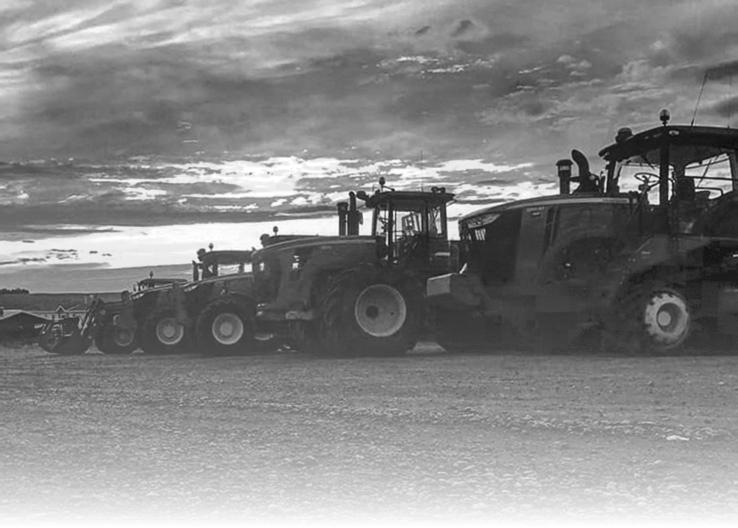


Grading grains when selling serves several important purposes for both buyers and sellers.
Grading ensures that buyers receive grains of consistent quality. Grains can vary widely in factors such as moisture content, size, colour, purity and presence of foreign materials. Grading allows sellers to classify grains according to these factors, giving buyers confidence in the product they are purchasing.
Grading helps establish fair market prices for grains. Higher-quality grains typically command higher prices, while lowerquality grains may be sold at a discount. Grading allows sellers to accurately price their products based on their quality, helping to ensure fair transactions for both parties.
Grading helps grains compete in the market. Buyers often have specific requirements for the grains they purchase, such as certain moisture levels or purity standards. Grading allows sellers to match their products to the needs
of buyers, making their grains more marketable.
Grading helps mitigate risks for both buyers and sellers. By providing standardized quality classifications, grading reduces the likelihood of disputes over the quality of grains delivered. This helps protect both parties from financial losses and maintains trust in the marketplace.
In many countries, grading is required by law or government regulations. These regulations may set standards for grain quality and establish grading procedures to ensure compliance. Grading helps ensure that grains sold meet these legal requirements.
Grading grains typically involves inspecting samples of the grain for various quality attributes, such as size, moisture content, foreign material content, and visual appearance. Grading may be performed by sellers themselves or by independent third-party inspectors.
The grading process may involve visual inspection, measurement of physical attributes and laboratory analysis.
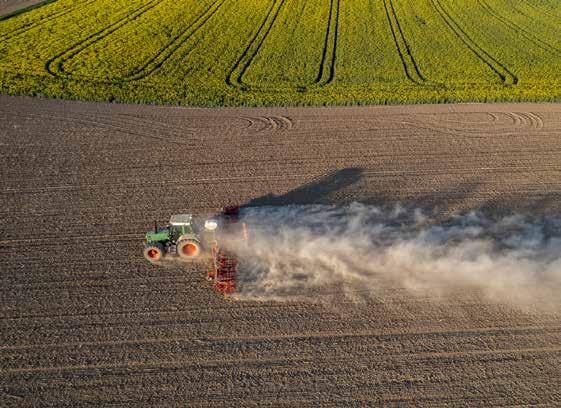



Local entrepreneur, 16-yearold Kamden Bartman has quite literally taken a famous nursery rhyme and turned it into a thriving business.
Known as the Prairie Shepherdess, Kamden started raising her own flock of sheep in the fall of 2020, following her parents’ decision to try their hand at raising lambs.
“After my family had been raising meat lambs for about two years, they decided to purchase a flock of bred Navajo Churro ewes in the spring of 2020,” said Kamden. “By purchasing the flock of ewes, they would have the opportunity to raise their meat lambs from start to finish, and dabble into breeding sheep.”
Throughout the first summer with the sheep, the family was able to dive into rotational grazing, vaccinating, hoof trimming and everything in between.
“Being able to work with the sheep on a level I never had the opportunity to before was amazing, and I fell in love with it all.”
However, in the fall of 2020, Kamden’s parents decided to sell the flock, choosing instead to grow the beef and pork side of their operation.
“The sheep were an extra thing that would be a bit harder to maintain as they reached their longterm goals,” explained Kamden. “Me being me, I fell in love with the flock in the short few months we had with them, and I couldn’t have imagined saying goodbye to them. So, I begged my parents to let me keep a few of my favourites, and it began there. I started out in the fall of 2020 with two of the mature ewes from that spring, and the five ewe lambs that were born that spring.”
From that point forward, Kamden has grown an interest into a flourishing business that for anyone, let along a 16-year-old, would be described as incredibly ambitious.
“I raise Icelandic and Navajo Churro sheep,” noted Kamden. “I have chosen these breeds for their triple purpose usage (can be used for meat, dairy and wool); their hardiness in heat and cold; smaller size; good mothering instincts; easy lambing abilities; and their sweet personalities.
yarn or other wool products. “I also keep a few of the fleeces for myself each shearing. I hand wash and process them right here on the farm and turn them into wool dryer balls, felted fleece rugs, batts to sell to spinners, and dryer ball kits.”
Since beginning back in 2020, the Prairie Shepherdess has grown her flock to 29 ewes, one fibre wether and two rams, and is expecting over 35 lambs this year.
While the majority of the lambs Kamden raises are sold as breeding stock, she said she also keeps a few of them each year for butchering. “Those lambs are processed in the fall or winter and sold as half and whole lambs. Using the whole animal and honouring their life has always been something that has interested me from the beginning and, with the lambs I have butchered, I get back their sheepskins and traditionally tan them with the use of eggs from my flock of chickens and smoke to set the tan. As well, I offer custom hide tanning for other farmers around who are looking to use more of their animals.”
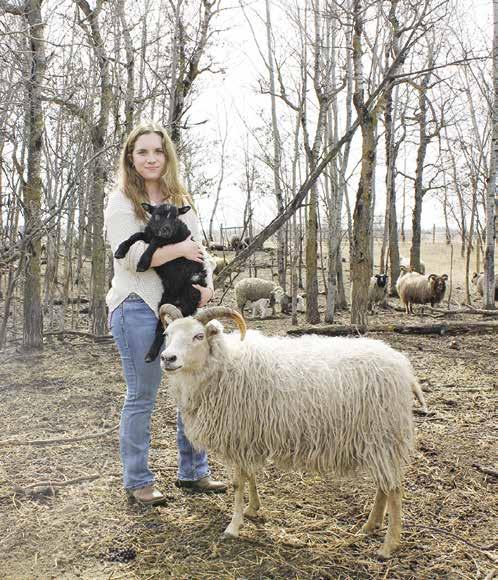
Kamden said that after the ewes wean their lambs, she will milk a few of them, using the milk to make sheep milk soap. “I will freeze it all, and my lovely mom turns it all into soap for me.” Yet another part of this amazing entrepreneur’s business strategy.
“I also get busy processing their sheepskins. Just as those lambs are ready to be processed, my next batch of lambs are being born. It truly is the whole circle of life. Being able to live this life is the biggest blessing and I wouldn’t change it for the world.”
Not one to rest on her laurels and determined to honour the lives of her flock by using the entire sheep, in the summer of 2022, Kamden began tanning hides from her own flock and custom hides from local flocks.
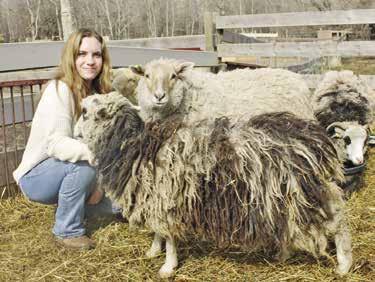
“I am focused on breeding and raising triple purpose breeding stock for other farmers throughout Canada, and producing wool, sheepskin and dairy products. Using as much of the animal as I possibly can and producing products without the use of chemicals and toxins is my passion.”
Kamden explained that the flock is sheared twice a year in the spring and fall, with fleeces sold to fibre artists throughout Canada and the United Stated to turn into
Each year, Kamden has the ewes bred in November, anticipating the arrival of lambs at the end of March/early April. “By the time they lamb, it is warm enough outdoors that the lambs can be outside full time and I don’t have to worry about needing an indoor space for them. My lambs are weaned and separated from mom in June, and will either head to their new homes at this time or stay with me.”
By the time autumn rolls around, the lambs born in the spring will be big enough to be processed for meat.
“I was getting many questions related to tanning, so I decided to start writing my own book Egg Tanned Sheepskins At Home.”
After months of working on the book, it was published in November of 2023 for worldwide access.
“Being able to help so many people around the world learn to tan their own sheepskins has been such a great honour,” remarked Kamden. “Whole animal use and tanning are such a big part of my life, and I love that others love it just as much as I do, and I can help them with their dreams and goals.”
Continuing on a climb of success and notoriety, Kamden spoke at the Gathering Threads Festival in Edmonton last year, and in February was the guest speaker for the Canadian Wool coffee house to 46 online viewers. “I had the opportunity to share a deeper look into my business, my animals, the products I produce, and a bit about myself.”
However, like any successful business, the journey means sacrifice and hard work, and Kam-
den is no stranger to either.
“The biggest challenges of being a young entrepreneur is still being in high school and managing a business.
“I have made the switch to online school for my classes this semester, which has definitely been a huge bonus. Being able to be at home full time has helped to have the extra time to work on wool and sheepskins and has been beautiful for lambing time.”
She often spends her days outdoors with the flock or working on wool or hides, then at the end of that long day of working the flock, tends to her schoolwork before retiring for the night.
“Doing online for my classes has been a huge advantage, and I’m so glad I made that choice to switch.”
It only takes a few minutes of walking around the pasture with Kamden to realize she takes her business and her flock very seriously.
She calls out to the sheep and as they rally around her, she kneels down on muddy ground to greet them on their level. She handles the baby lambs under the permitting, albeit watchful eye of the ewes that she knows by name.
“The biggest joy is being able to show other young individuals that you can do anything no matter your age, and anything is possible,” commented Kamden.
“The biggest piece of advice I would give to anyone is that any dream or goal can be achieved if you put your heart and mind to it. If it was easy, everyone would be doing it, and I feel like we constantly need to remind ourselves of that. Keep pushing no matter how hard it is, and keep working hard for your goal. Start small, and keep pushing. Your future self will be so proud of you for sticking to it.”
An inspiring message from a remarkable 16-year-old.









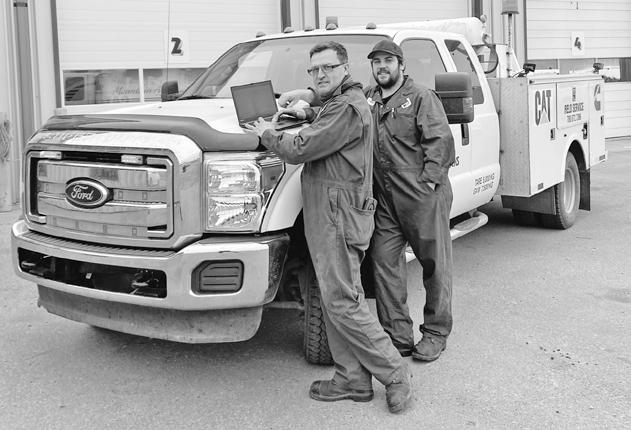


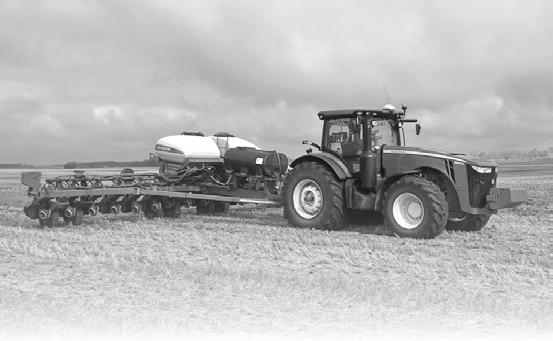
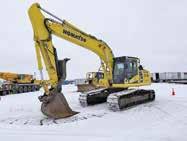
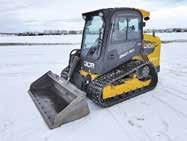







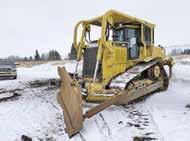



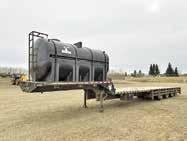

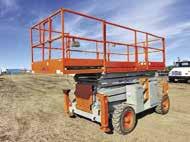



The Bailey Theatre has a great lineup of shows planned for this season. Here are some of the highlights. Carter and the Capitals will be playing high energy music at the Bailey on April 27 at 8 p.m. as part of the Rose City Roots Society series.
In 2019, the Capitals released their debut, self-titled album after working closely in Vancouver with JUNO award-winning producer Ben Kaplan.
The Bailey Buckaroos are back for a
classic country music evening with special guests. The next show is on April 28 at 2 p.m.
The Big Valley Regional Adult One Act Festival, put on by the Alberta Drama Festival Association will be at the
on May 4 beginning at 5 p.m.
Motherhood The Musical will be per formed by the Churchmice Players on May 10, 11 and 12. The Friday and Saturday shows are at 7:30 p.m. The Sunday show begins at 2 p.m.


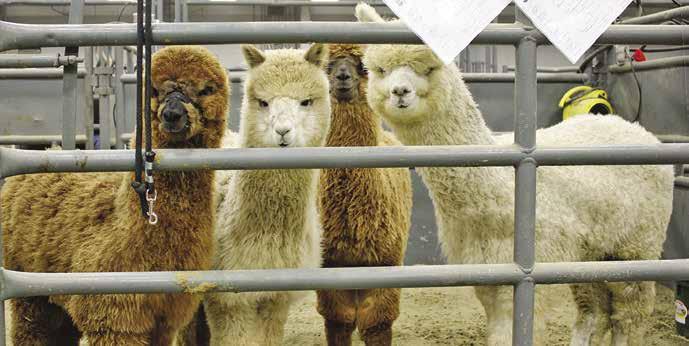
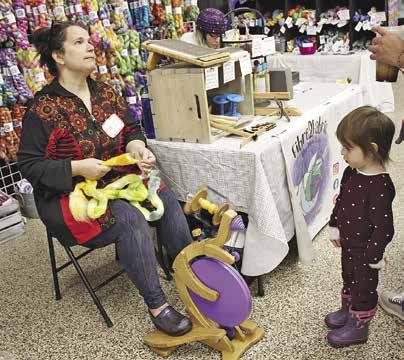
to get up close with
The Magic Alpacas Show and Fibre Fest held on April 6 and 7 at the Camrose Regional Exhibition Grounds attracted people from Camrose and surrounding areas as well as visitors from the rest of the province and other provinces. The Fibre Fest reported 460 visitors to the event. The Yarn Winding Station raised $83 to be donated to the Days For Girls Camrose Team. As well, cash and food donations were made to the Camrose Neighbor Aid Center
photo below.)
The Magic Alpacas Show (Canadian National Alpaca Show and Sale) featured a variety of sizes, shapes and colours of show alpacas.
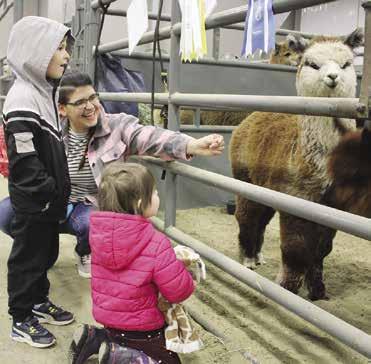
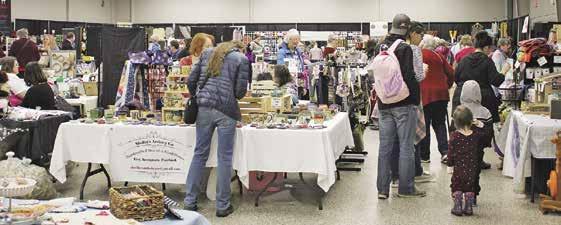
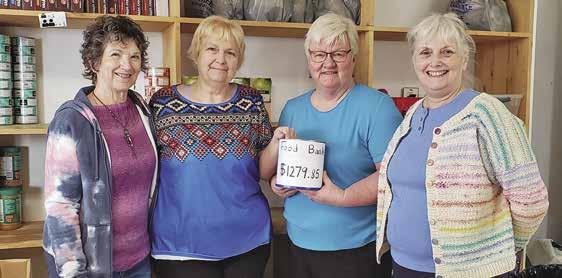
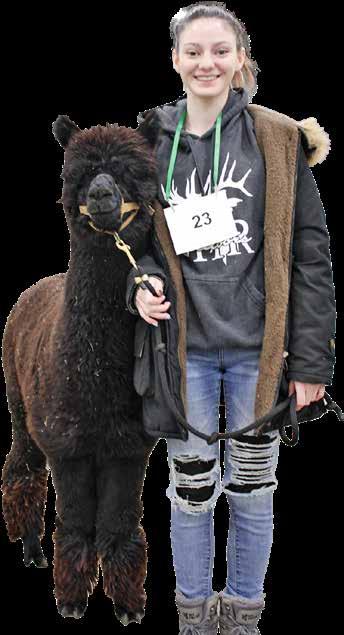











 By Murray Green Battle
By Murray Green Battle
River School
Di-vision announced that bus registration for the 2024-25 school year is now open until 4 p.m. on June 27.





Additionally, parents with students that have had changes to their contact information, such as physical address or school of attendance, are required to register. If there are no changes to student contact information, rural students will automatically be included in the route plans for the upcoming school year, with no need to register.
Applications for school of choice/cross boundary transportation will be available at 9 a.m. on May 1.
For more details and eligibility information, please visit www.brsd.ab.ca/ families/transportation
The shift to this earlier registration window will allow for more timely notification of student bus assignments. This change also allows for better communication between families, schools, bus drivers and transportation department staff. Parents with bus students from the City of Camrose and the Town of Tofield must register annually. For all other locations, parents with bus students need to register only if this is the first time that their child(ren) will be riding a BRSD school bus, such as new students beginning kindergarten.









announced that $14,259,386 will be allocated to making roads and construction projects a reality in the area, April 10.
The total cost of the 20 projects will be about $18,680,100. The remaining costs will be shared by the municipal governments.
The 2024 Provincial Construction Program for highway and water management projects, as well as the active and previously approved capital project grants for Camrose constituency was made available by Dreeshen.
The maps for regular construction programs and interactive projects are online at: www.alberta.ca/ provincial-constructionprogram.aspx. The maps are updated regularly should you wish to watch the status of a project.
“Note that these re ports do not include mu nicipal grant projects, such as Strategic Transportation Infrastructure Program (STIP) and Water for Life (W4L) and Alberta Mu nicipal Water/Wastewater Partnership (AMWWP) programs. Water grant pro grams (W4L and AMWWP) and STIP are currently under review, and notifica tions for successful project funding will be sent in May 2024,” he added.
The highway and wa ter management projects include the following: High way 13 will receive funding for a replacement of a culvert near Ervik, widening of the highway and a roundabout at the junction of Highways 13 and 56.

Repaving between Hwy 861 and 608 (selective) for 20 kilometres near Forestburg. Bridge work on Hwy 53 near Donalda will include replacing the rail, making concrete repairs and other safety upgrades.
Near Meeting Creek, between Hwy 53 and two km south of Hwy 609, 22 km of repaving.
Repaving between Hwy 21 and the Village of Edberg will be 12 km of construction.
On Hwy 834, the highway will be widened for about 19 km near Tofield, relocate access and construct service road near Twomey and make slide re-

pairs near Ankerton. Some of the work will be outside of the central region.
Capital grant projects include the following: wastewater system upgrades, Town of Daysland; two water transmission line completions, Highway 12/21 Regional Water Services Commission; airport runway overlay, City of Camrose; five culvert replacements, Camrose County; and industrial business district access, Town of Hardisty.
This is only a list of the active and previously approved grants. It does not include any new 2024 grant applications that are currently under review.
RCMP would like to warn motorists of the dangers of crossing double solid lines in any traffic situation but particularly when parking or backing out of a parking spot on Main Street. “Last summer RCMP warned drivers about their habits along Main Street in Bashaw, which involved crossing the double solid line to park on the opposite side of the street,” said Bashaw RCMP Corporal
Kyle Neilson. “This also included drivers backing out across the double solid line when leaving their parking spot. Last summer this resulted in several collisions due to the fact vehicles from both sides of the road were trying to park or leave a designated parking spot at the same time.”
Neilson said that last summer lines were repainted along Main Street and are now clearly visible to all drivers.
“RCMP and Camrose County Peace Officers will begin ticketing drivers for crossing the double solid line with a zero-tolerance approach,” noted Neilson adding that the penalty for crossing the double solid line is $243, under The Use of Highway and Rules of the Road Regulations.
“Drivers are free to make a safe U-turn at any intersection not controlled by lights or where prohibited by a sign.”